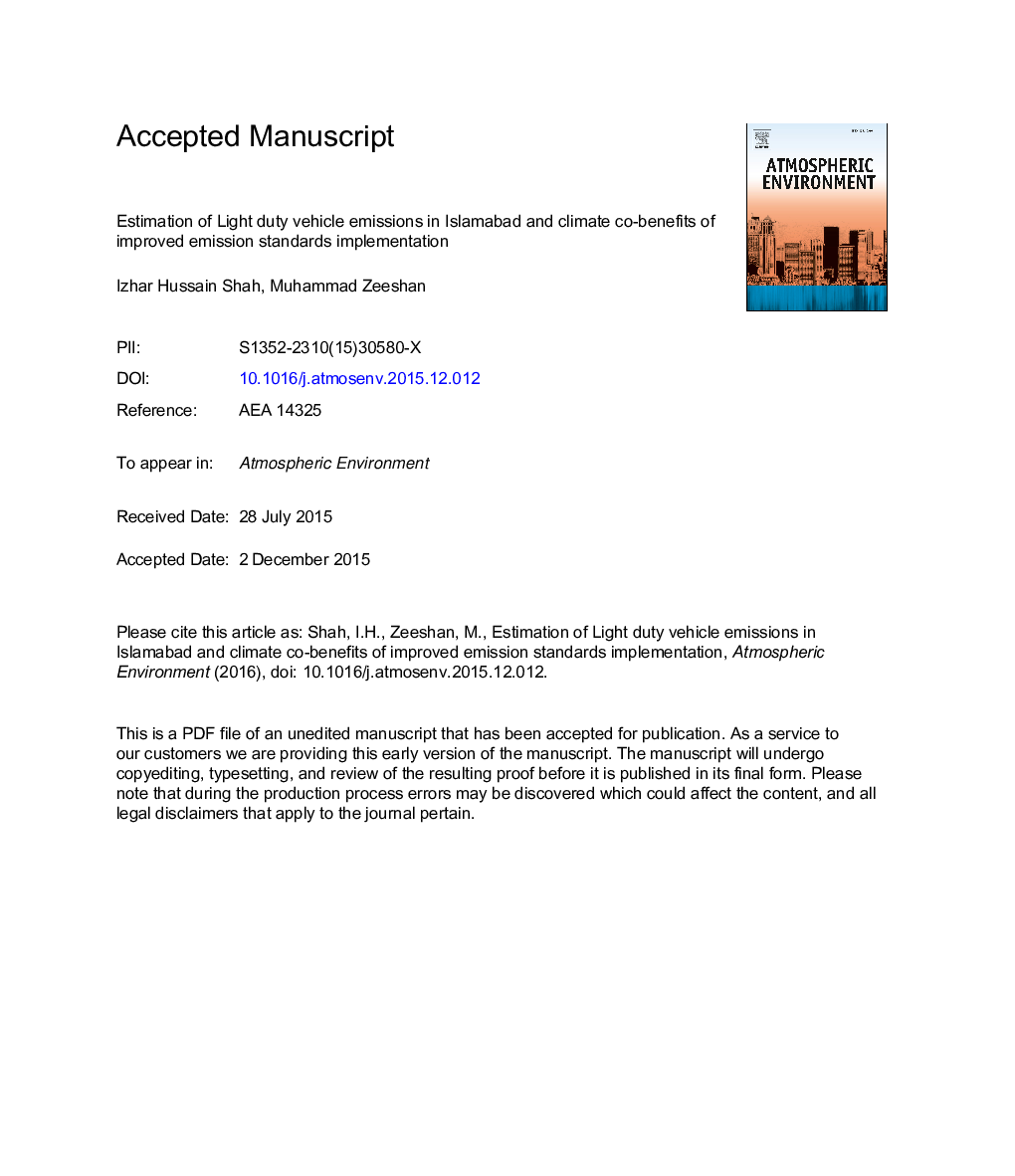| کد مقاله | کد نشریه | سال انتشار | مقاله انگلیسی | نسخه تمام متن |
|---|---|---|---|---|
| 6336891 | 1620347 | 2016 | 27 صفحه PDF | دانلود رایگان |
عنوان انگلیسی مقاله ISI
Estimation of light duty vehicle emissions in Islamabad and climate co-benefits of improved emission standards implementation
ترجمه فارسی عنوان
برآورد انتشار خودروهای کم مصرف در اسلام آباد و همکاری با مزایای استفاده از استانداردهای پیشرفته انتشار
دانلود مقاله + سفارش ترجمه
دانلود مقاله ISI انگلیسی
رایگان برای ایرانیان
کلمات کلیدی
موضوعات مرتبط
مهندسی و علوم پایه
علوم زمین و سیارات
علم هواشناسی
چکیده انگلیسی
Light Duty Vehicles (LDVs) hold a major share in Islamabad's vehicle fleet and their contribution towards air pollution has not been analyzed previously. Emissions for the base year (2014) and two optimistic 'what-if' scenarios were estimated by using the International Vehicle Emissions (IVE) model. Considering the recent implementation of Euro II as emission standard in Pakistan, scenario 1 assumed entire LDV fleet meeting at least Euro II standards while scenario 2 assumed all LDVs meeting Euro IV standards except motorcycles which would be meeting Euro III emission standards. Higher average age for all vehicles and lower share of Euro compliant vehicles was found in the base case. Low engine stress mode (lower speeds with frequent decelerations) was observed for all vehicles especially on arterials and residential roads. Highest overall emissions (59%) were observed on arterials, followed by residential roads (24%) and highways (17%) with higher emissions observed during morning (8-10 am) and evening (4-6 pm) rush hours. Composite emission factors were also calculated. Results reveal that 1094, 147, 11.1, 0.2 and 0.4Â kt of CO2, CO, NOx, SO2 and PM10 respectively were emitted in 2014 by LDVs. Compared with the base year, scenario 1 showed a reduction of 9%, 69%, 73%, 13% and 31%, while scenario 2 exhibited a reduction of 5%, 92%, 90%, 92% and 81% for CO2, CO, NOx, SO2 and PM10 respectively. As compared to the base year, a 20 year CO2-equivalent Global Warming Potential (GWP) reduced by 55% and 64% under scenario 1 and 2 respectively, while a 100 year GWP reduced by 40% and 44% under scenario 1 and 2 respectively. Our results demonstrated significant co-benefits that could be achieved in emission reduction and air quality improvement in the city by vehicle technology implementation.
ناشر
Database: Elsevier - ScienceDirect (ساینس دایرکت)
Journal: Atmospheric Environment - Volume 127, February 2016, Pages 236-243
Journal: Atmospheric Environment - Volume 127, February 2016, Pages 236-243
نویسندگان
Izhar Hussain Shah, Muhammad Zeeshan,
